Technical
Maintaining Your Car and Keeping that Classic on the Road

XB Ford Falcon GT Coupe
With some of the nicely kept Ford Falcon GTs fetching a handsome price on the second-hand car market it would be tempting to grab one, enjoy it, maintain it and know that you’ve bought an investment. Holden’s exiting from the automotive industry also suggests that some of the awesome Commodores and HSVs would be an appreciating classic too. But running any classic, whether from Porsche, BMW or even Toyota, can be a fun hobby and a sound investment.
The good thing about owning older Falcons and Commodores, and I’m talking about any of the models going back to the early sixties for the Falcon and late seventies for the Commodore, is that there is such a great following in Australia and New Zealand for these cars, particularly the sports models, that there always seems to be a flow of parts from somewhere out of the Southern Hemisphere. Even aftermarket parts for a component can be easily located and sourced, and this will be true for a lot of classic cars.
There are some things that are essential to our daily lives, and currently vehicles are a huge part of anyone’s daily/weekly routines. They drive us to our jobs, drive the kids to all of their activities; they get us to that favourite holiday or picnic spot, and are essential for running those little errands. Without a vehicle, it would be impossible to do everything that we need to do and are used to doing.
Out of need (and for the love of it), there are many of us that have become good at keeping our vehicles in good running shape, and that doesn’t just apply to those who collect and maintain older vehicles like the cruisier Falcon and Commodore. If you can keep your own vehicle in the best shape possible, then you can avoid the added costs of repairs or at least put repairs off for a time, and even put off the need to buy a new vehicle. When driving, we are still seeing cars from decades ago still going strong, and you may even see some that look almost just as good as the day they were bought. An old Ford Falcon XR8 or GT still catches attention, and Holden’s HSVs from even the early 2000s look awesome and sound amazing.

AU Ford Falcon XR8
There may be some of you who, like myself, drive a newer car (Toyota Camry for me) for getting all the weekly errands done, and then have a classic or older vehicle (Ford Fairmont for me) for enjoyment on a long cruise or holiday away. The vehicle tucked away in the shed for the weekend can be one of those cars that you can tinker away on during your days off, while getting the pleasure of a long run out on the open road for that long weekend away.
In this day and age, there are so many resources that are on the web which can inform drivers about how to keep their vehicles in great shape so that they will run nicely for as long as possible. The secret to being able to enjoy a car (old and new) for many, many miles is regular maintenance. Here are just some of the basic routine maintenance tasks that you can do to keep your car on the road and running fine.

Oil Change
Change your engine oil and oil filter often.
This is the single best thing you can do to extend the life of your engine. Keep a note of the odometer reading and date that you changed the oil and filter so that you can schedule it in for next time.
Replace your transmission fluid and differential oil.
It’s not as often as engine oil and filters need changing, but the transmission and diff oil should be done regularly (around 40-to-60,000 km) to keep these systems running sweetly. Check your vehicle’s manual for the suggested timeframes for changing them.
Add new engine coolant.
Every once in a while, the engine coolant needs flushing out and some new coolant put back into the cooling system. This is important because it keeps the pipes from freezing up in cold weather, it keeps the tiny coolant passages free from debri and muck that will build up overtime, and it is also very important for your heating system inside the car. A heater core is often tricky to get to and often requires removing the whole dash just to get to the small heater core radiator. This was the little culprit that caused my old Terrano to cook its engine!
Maintain your wheel bearings.
Wheel bearing maintenance or replacement is important because they ensure the smooth running of the tires. When checking in for your next car check-up, make sure to ask for a wheel inspection to see if your bearings are in OK condition. Usually, this only involves adding some grease to the bearings to get them moving smoothly again.
Change your brake fluid.
This helps fend off moisture building up in the braking system, leaving your brakes free of rust and corrosion and working at their optimum, which really comes down to staying safe out on the road.
Cleaning
Keep your exterior and interior nice and clean. It’s recommended that you wax and wash your car four times per year at a minimum.
Keeping the interior out of heavy sunlight helps this area last longer and stay smarter. If you have a car with leather seats, do apply leather conditioner as required to keep the leather soft, pliable and protected.
To keep your vehicle in great shape, it only takes a bit of initiative in the form of having your car taken in for maintenance every once in a while, and or doing it yourself. If you experience any weird sounds or unusual problems with your car, then it needs to be checked out by a mechanic as soon as possible.
Now… Back out to my Falcon!
Where is Motorsport Currently Found on the EV Map?
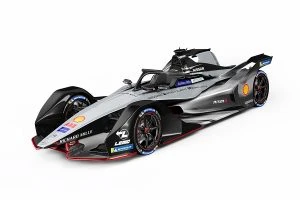
Formula E racing car.
Traditionally, the latest cutting-edge technology finds its way into road cars via the heat of motor racing. We are seeing EV racing going big quickly with the relatively recent Formula E championship, but how many motor racing championships are looking to EV technology for their future racing blue-print? As yet, EV motor racing technology hasn’t made its way into the everyday life of most average Australian motorists. Most of us still drive a motor vehicle with a healthy internal combustion engine, and most of us won’t be intending or even considering buying an expensive EV as an everyday means of transport anytime soon.
Supercars are continuing to investigate implementing hybrid technology into its racing schedule.
Formula One has had its engine regulations tweaked further with the aim of promoting closer racing and more balanced competition, as well as bringing economic and sporting sustainability to Formula 1. So, the cars are now flashier and more visually alluring, with the reshaping of the front and rear wings looking good. Formula One has a target to be net zero by 2030, and the way this is to be achieved is by removing single use plastics from its events, in collaboration with its circuits. Formula One won’t be going electric but will stay hybrid, and this has been a definite decision that the ‘powers that be’ have taken for the good of the automotive industry as they keep their racing car platforms relevant for future road cars. Formula One does not see electrification as the new world-religion, and it has stated that EVs are definitely not the only way to move forward with cars. Hybrid technology is Formula One’s current future objective, where the 2025 engine-unit will be hybrid and using 100 % sustainable fuels. Formula One sees a need to reduce the costs of this new engine-unit and platform so that it is affordable and less complex, which will open up huge potential for original equipment manufacturers (OEMs) to use in other applications for road cars.
In the World Rally Championship, current hybrid engine regulations from 2022 through to 2025 is all go, which introduces hybrid technology to the fastest cars on gravel. The hybrid technical regulations are a long way from being finalised, but initial talks have mooted a ‘supplementary hybrid system’ which controls components and software. The proposed hybrid units would allow WRC cars, which will retain the 2017 aero and engine package, to run as full EVs on transit stages, while providing a power boost on competitive special stages. Following 2025, the plan is to open up the rules to allow manufacturers to use their own electric systems for racing.
Formula E
Formula E is going from strength to strength, with Mercedes-Benz and Porsche recently joining the grid. Formula E, officially the ABB FIA Formula E World Championship, is a single-seater motorsport championship for electric cars (EVs). The series was conceived in 2011 in Paris. Formula E is the biggest motor racing event solely focussed on EV racing alone, where it is the proving ground and platform to test new ev technologies, drive development to the production line, and put more EVs on the road.
Using the sport as its showcase, the ABB FIA Formula E World Championship is sending the biggest message out to the world that may help alter perceptions and speed-up the switch to electric, in a bid to counteract the so-called “climate crisis” as well as addressing the effects of air pollution – particularly in cities. Sure, Formula E is the fastest-growing series in motorsport because its also the newest; however, it is certainly going to help put EV technology out there on the roads, even if most current EV buyers are either famous and or high-end earners.
Some electrification in motor racing is happening, where we’re seeing classes like the British Touring Car Championship, IndyCar, IMSA, NASCAR and World Rallycross Championship having some sort of hybrid or fully electric rules etched into the near-future pipeline. This is all good, but the reality is that most motorists in the general public will still be driving a car with a combustion engine, or combustion engine with hybrid technology, or a car with a combustion engine running on bio fuels in a decade because of the price of a new EV being way too steep, the lack of an EV infrastructure another, the cost of developing a country’s power grid worthy of supporting the power drain of a big EV fleet, EV battery life span, and the list goes on…
All of the many negative attributes that can be accredited to EVs aside, there are some fascinating new technological developments in hybrid and ev technology unfolding within motorsport itself.
Carbon Dioxide Emissions and EVs

Founder of Greenpeace, Patrick Moore, has some knowledgeable things to say about carbon emissions and CO2 in the atmosphere. Many politicians and “scientists” are stating that CO2 is the big baddie that will cause us all to burn up in smoke as the temperature of the earth will continue to heat up; and that life on earth is in terrible danger, and that the only way out of this escalating CO2 is to inflict all humans to pay higher taxes and drive EVs. It all sounds a little fishy!
According to the Intergovernmental Panel on Climate Change (IPCC), CO2 emissions from fossil fuels, which constitute 85% of our energy use, must be reduced to zero by 2100. It is their idea that a vast and diverse mix of policies should be employed to restrain and reduce the use of light duty vehicles (LDVs), the sort of vehicles that you and I drive. The IPCC suggests “aggressive policy intervention to significantly reduce fuel carbon intensity and energy intensity of modes, encourage travel by the most efficient modes, and cut activity growth where possible and reasonable”. That sounds like severe action going down like a lead balloon upon hard-working people in the world trying to pay escalating taxes to the fat cats in high places. Maybe some of it’s true.
Apparently, those in the IPCC claim that “if we don’t save ourselves from ourselves we’re toast!” Scientist Patrick Moore says that “Here is what is strange, though. All life is carbon-based; and the carbon for all that life originates from CO2 in the atmosphere. All of the carbon in the fossil fuels we are burning for energy today was once in the atmosphere as CO2 before it was consumed by plankton in the sea and plants on the land. Coal, oil and natural gas are the remains of those plankton and plants that have been transformed by heat and pressure deep in the earth’s crust. In other words, fossil fuels are 100% organic and were produced with solar energy. That sounds positively green!”
Other scientists also say these coal and oil remains were laid down during the catastrophic flood that occurred over the earth’s surface as recorded in biblical events.
Patrick Moore, and other scientists, also state that if there were no CO2 in the earth’s atmosphere, the earth would be a dead planet. The US Environmental Protection Agency (EPA) has deemed this essential ingredient for life a pollutant! How can CO2 be bad?
Carbon Emissions is the term used by governments and policymakers as the emissions that come from burning fossil fuels for energy. Patrick Moore continues, “…This term is entirely misleading because CO2 is not carbon. CO2 is a colourless, odourless, tasteless gas which is an indispensable food for all living things. Can you have too much of it? In theory, yes. That is what climate alarmists say is happening now! They are stating that “CO2 levels are getting too high!” Are they right? The Big Picture tells us something surprising. For most of the history of life on earth, CO2 has been present in the atmosphere at much higher levels then it is today. During the Cambrian explosion, when multicellular life came on the scene, CO2 levels were as much as 10x higher than they are today. From a Big Picture perspective, we are actually living in a low CO2 era…”
Patrick also suggests that science tells us that “… the optimum growth for CO2 is 4–5x what is currently found in our atmosphere. This is why quality greenhouse growers all around the world actually inject CO2 into their greenhouses. They want to promote plant growth, and this is the way that they do it. Likewise, higher levels of CO2 in the global atmosphere will promote plant growth. This is a good thing! This will actually boost food and forest productivity, which will come in handy with the human population of earth set to continue to grow.”
Patrick Moore, co-founder of Greenpeace, for Prager University, states that “… we are seeing the positive effects of increased CO2 now. Satellite measurements have noted the greening of the earth as crops and forests grow due to our higher levels of CO2. It turns out that Carbon Dioxide (CO2) are not dirty words after all. We should celebrate CO2 as the giver of life that it is.”
What are the more dangerous emissions from fossil fuels? The majority of vehicle exhaust emissions are composed of carbon dioxide, nitrogen, water vapour, and oxygen in unconsumed air. Carbon monoxide, unburned fuel, nitrogen oxides, nitrated hydrocarbons, and particulate matter such as mercury are also present in vehicle exhaust emissions in smaller quantities. Catch these nastier particulates, which are hazardous to our respiratory system, via the catalytic converter or other means, and the conventional internal combustion engine is not quite such a monster. In fact, a decent hybrid vehicle for city driving along with hydrogen fuel-based vehicles seems a much better alternative to a mass wave of EVs and taxes. Hybrids and hygrogen-celled cars in congested areas seem a perfect fit for now.
Hybrids currently available in Australia include: many Toyota and Lexus models, Toyota Corolla SX Hybrid, Toyota RAV4 GXL Hybrid, Toyota Camry Ascent Sport Hybrid, Mitsubishi Outlander PHEV, Hyundai Ioniq, BMW X5 xDrive45e, Lexus ES300h Sports Luxury, Volvo XC90 T8 Twin Engine Hybrid, Mercedes-Benz C 300e PHEV and BMW 330e iPerformance PHEV.
If you’re interested in more from Patrick, have a look at: https://www.prageru.com/video/the-truth-about-co2/
EVs and the Japanese Manufacturers
I like to get a feel for what is truly happening in the EV world by heading over to the Japanese to see what they are up to. The Japanese make the best cars in the world, at least from a reliability and practical point of view, so it makes sense to me to have a look at what their plans are when it comes to EV innovation, invention and implementation.
Mazda

Mazda MX 30 EV
Mazda is planning to introduce ‘Skyactiv Multi-Solution Scalable Architecture’ for hybrids, PHEVs and EVs in 2022, and they plan to offer three EV models, five PHEV models and five hybrid models sometime between 2022 and 2025. Mazda will also keep hybrids and PHEVs as part of their saleable new cars beyond 2030.
By the end of 2023, Mazda plans to show at least two plug-in hybrids by the end of the year.
In 2026 Mazda plans to show the platform for a new generation of EVs in the early part of the year.
By 2030 Mazda plans to offer a hybrid or electric variant for every model that Mazda has in their line-up. However, even though Mazda will develop a dedicated EV platform by 2025, Mazda’s majority of vehicles beyond 2030 will be hybrids and plug-in hybrids, and, as such, Mazda is not about to stop developing its internal combustion engines anytime soon.
Honda
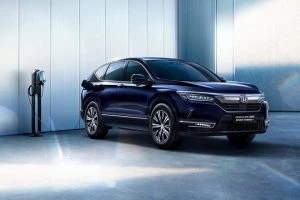
Honda EV Crossover
Honda plans to develop its own solid-state battery tech, rather than relying on outside developers.
By 2023, a Honda EV built in partnership with GM, reportedly a crossover, is expected to enter production.
Honda foresees that 40% of their models will be electric or hydrogen fuel-cell powered by 2030, climbing to 100% by 2040. Honda is one of just a handful of automakers alongside Toyota, Hyundai, and BMW, to devote plenty of their development energy into to hydrogen fuel-cell vehicles.
Toyota
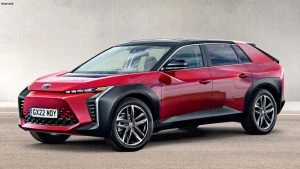
Toyota BZ EV Concept
By 2025, Toyota plans to launch 60 new hybrid, electric, or fuel-cell vehicles by the end of that year, and it also expects to have reached its goal of selling 5.5 million EVs each year. Their dedication to hydrogen fuel-cell vehicles is strong, and they remain big game players in this sort of technology.
Looking across the Tasman (where NZ’s PM, Jacinda Ardern, put her foot in it by claiming that Toyota would be providing EV utes in just 2 more years) it is evident that Toyota will not be putting all their eggs in one basket and going totally bent on EV production. Toyota is adamant that a slow EV uptake is more likely, and hence they would not be giving up on their particularly good hybrid engine technology any time soon.
Nissan

Nissan ids Concept EV
Nissan is the manufacturer of the highly successful Nissan Leaf EV Hatchback, which has been in production for some years now. By 2023, Nissan plans to have launched eight EVs by the end of the year and will be hoping to be on target to sell 1-million hybrid or electric vehicles, globally, per-year. Nissan states that their hybrid technology and their technology to improve their internal combustion engines won’t be stopping before 2030, at least.
Mitsubishi
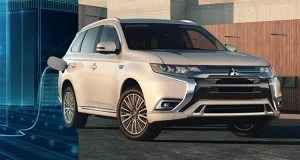
Mitsubishi Outlander PHEV
Mitsubishi has the marvellous Outlander PHEV, which has been in production for many years now. By 2030, Mitsubishi plans for 50% of its global sales to come from hybrid or electric vehicles. I guess that leaves 50% to be still made up of efficient internal combustion vehicles.
Subaru
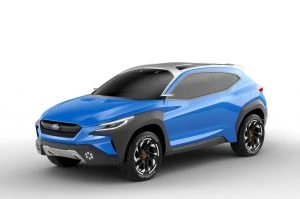
Subaru Solterra EV Concept
Subaru, by 2030, expects 40% of its global sales to come from hybrid or electric vehicles. By 2035, Subaru plans to have a hybrid or electric version of every vehicle in its line-up. Subaru seems to be singing off a similar song sheet to Toyota, where they both suggest that the hybrid vehicle will prove to be more popular in the short term, particularly as the EV infrastructure has a long way to go.
By 2050, Mazda, Mitsubishi, and Nissan have made bold plans to reach net-zero carbon emissions.
The big questions are: Will the EV-charging infrastructure match the manufacturer claims? Will people be able to afford an EV, let alone the huge cost to make their home charge ready, as the ideologically bold demands that some governments introduce along with big taxes? Who is going to pay for all of this?
I read a recent comment where a reader of ‘Car and Driver’ made a very informed comment:
“It’s a ‘no thanks’ on Li batteries from me. Lithium extraction has already spoiled the Atacama desert in Chile and now they have their sights set on the American West. I can reduce my CO2 footprint far more by just driving less than by purchasing a 100 kWh battery, and the 10-20T of CO2 that was released to make it. I’ll wait for fuel cells. As a Toyota driver… I have time.”